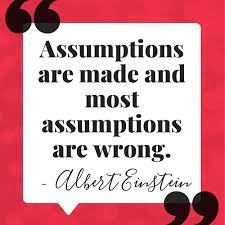Best Practice #1: Moving From Reactive Trading to Planned Trading
Very often, the psychological challenges that traders face occur because they are making trading decisions in the heat of the moment, when they are most likely to be stressed and impulsive. Successful traders have intensively studied their most successful trading and know what they do best. They then turn their best practices into trading rules, so that they know exactly what kinds of opportunities to look for in markets, how to express those opportunities, how to size the positions and manage them, etc. The beauty of knowing what you do best and how you do it is that you can then mentally rehearse the right actions as part of preparation for the day. Biofeedback and visualization methods can be helpful in that mental rehearsal. Keeping the right kind of trading journal also helps greatly in focusing on your learning lessons. Knowing your best trading also enables you to stand apart from markets when opportunity isn't present. The best traders I work with patiently wait for their opportunity and don't feel a need to trade. They are like the baseball batter who knows the pitcher well and is willing to wait for a good pitch in the strike zone.
Best Practice #2: Drawing Upon Your Strengths
Here is a short personality quiz designed to identify your strengths. Here is a way of interpreting the results. The successful traders I've worked with know who they are, what they're good at, and what excites and challenges them. They also are aware of their flaws and can leverage those into strengths. Because they find ways of trading that leverage their strengths and are meaningful to them, they have no problem staying engaged in markets during challenging times. They also draw upon their strengths outside of their involvement in markets, so that their personal activities are an ongoing source of fulfillment. The right work-life balance isn't just spending time in activities outside of trading; it's making use of the best of you in relationships and in personal pursuits. The number one occupational hazard for full-time traders is burnout. When we don't achieve work-life balance based on what is meaningful to us, we lose work efficiency and we become less creative. I've often advised traders to always make sure they have passions in life that are greater than their passion for trading. If your only strength is trading, that becomes a vulnerability.
Best Practice #3: Creativity
The greatest weakness of traders overall is that they are looking at the same markets, processing the same information, and trading from the same charts and ideas as others. There is very little original in their thinking or trading. They are like the business owner who sets up a shop to compete with surrounding businesses, but who copies what they do. If you don't do different and distinctive things in markets, you won't achieve different and distinctive results. This is a topic I address in the Trading Psychology 2.0 book and that I've also tackled in the blog here and here. As the book emphasizes, there are specific techniques and processes we can learn to become better and more differentiated idea generators. The key is to look at new information and integrate information in new ways. Teamwork--networking with others who have backgrounds and skills different from us--is a valuable practice that can help us expand our horizons. In my own trading, I have found the best results by focusing on data that others don't look at, from high-frequency measures of buying and selling to patterns of breadth across time frames among equity sectors.
*
I hope this helps you coach yourself to greater success. As further resources, please check out this series of articles on trading psychology techniques (links to all articles at the bottom of the post); this post on best practices; and this post on learning from our best trades. If there is a specific trading psychology topic you are interested in, there's a good likelihood you can find something by doing a search for "TraderFeed topic". So, for instance, a search for "TraderFeed trading discipline" yields relevant posts. If you are interested in a collection of self-help techniques for your trading psychology, The Daily Trading Coach book might be most helpful. Best of luck for a happy, healthy, and prosperous 2024!
*


















